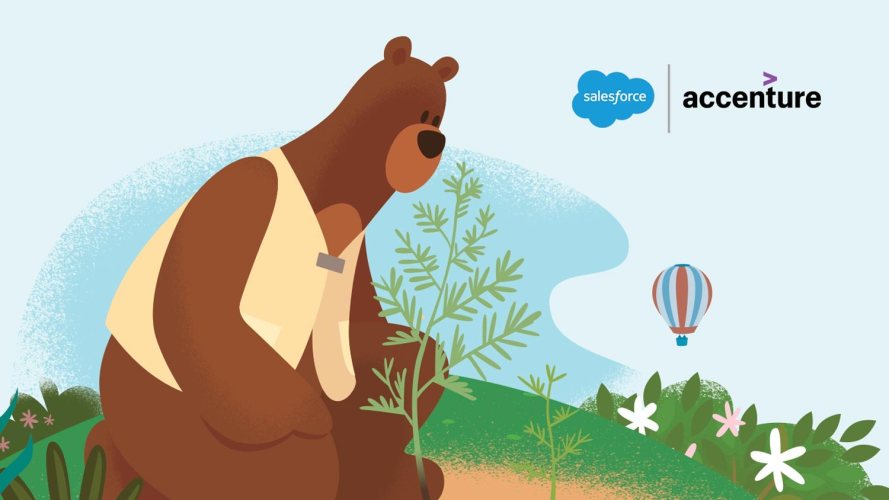This is a sponsored post produced in collaboration with Accenture.
Late in 2020, executive leadership at Accenture recognized that their business-to-business (B2B) sales transformation offering was not going to serve clients the way they needed it to. Sure, there was the coronavirus pandemic, which in the near term has basically nullified tried-and-tested sales techniques – networking, relationship building, and wining and dining – in a remote working world. But there were also more endemic trends reshaping B2B sales, including increasingly complex routes to market, segmentation models, and digital-native buyers with a whole new set of expectations.
To help clients navigate this new sales world, they turned to Bryan Berumen, managing director at Accenture and an 18-year veteran of the technology consulting firm, to build a new solution and bring it to market. What he came up with combines the best of Accenture’s in-house sales knowledge, their emerging artificial intelligence (AI) capabilities, and the horsepower and near-ubiquity of Salesforce’s CRM software to help the firm’s clients reinvent their B2B sales capabilities from the ground up.
Reimagine customer experience with Salesforce and Accenture



“It was kind of a no-brainer for us to take these amazing things that Accenture builds as a whole and identify how they can plug into Salesforce,” Berumen said. “That’s really the whole point: Nobody can bring these algorithms and processes to the table but Accenture and no one can digest them and do something with it but Salesforce. When combined, it should be market making.”
”When you think B2B sales, you probably imagine folks getting on an airplane every day, knocking on doors, trying to get someone to listen to their pitch. But the traditional B2B model has been disrupted, most recently by the coronavirus pandemic, which has forced many sales leaders to reinvent how they get in front of prospects in a remote-first world.”
In the past few years alone, a whole bevy of new routes to market have proliferated, including a more complex B2B2B model, which involves a middle company or wholesaler, and a B2B2C model, most frequently seen with consumer goods that go through large distributors or retailers before reaching the final buyer.
The challenge with all of these complex routes to market is that they make it harder to really get to know your end-customer or figure out what they expect from you. The traditional B2B sales model, due in part to its reliance on strong relationship-building skills, makes it easier to read the mind of your customer. But as routes to market and channels get more complex, the chasm between buyer and seller widens.
Behind every B2B interaction is a real-life customer
As Berumen’s team worked on developing their new solution earlier in 2021, they realized one of its most differentiating features would be the ability to help sales leaders learn more about their actual customers. Most companies have failed to really learn their buyers because of inconsistent digitization that leaves valuable customer data falling through the cracks.
“We assume that many of these big brands that we know and love have deep analytics capabilities. But they’re still filling out order forms via fax or sending things in linear fashion instead of a digital way,” Berumen said. “You ring up a bag of chips at the gas station, and the manufacturer may never actually know when that happened, how that happened, or in which location it happened. If that’s the case, does the manufacturer of these chips really understand me as a consumer? Probably not.”
Accenture’s new B2B sales solution is designed in part to do just that: incorporate Accenture’s sales intelligence directly into the Salesforce platform and help companies operating in a rapidly evolving business environment to learn more about their customers.
Routes to market have become more complex, but so have buyers. Today’s business leaders buying the bulk of B2B products are digital natives, Berumen believes. Millennials, who grew up surfing the web and are now between 28 and 40 years of age, are becoming vice presidents and directors. And according to The Growing Buyer-Seller Gap: Results of the 2018 Buyer Preferences Study from CSO Insights, the research division of Miller Heiman Group, 70% of B2B buyers have defined their solution needs before engaging sales; almost half have already identified solutions.
“Their expectation is one that’s personalized, that’s digital, where they can do a lot of research without ever engaging with a human being. They’re in channels that you don’t control. They’re on social media. They’re looking up your reviews,” Berumen said. “And so if you’re not engaging them in that fashion, you’re going to quickly fall out of favor.” Berumen believes that many customers would actually prefer to be able to buy enterprise products and solutions completely online, but that has proven to be an elusive feature in B2B selling.
Try it yourself: Go to any enterprise website and attempt to buy a product as a small or medium-sized company. How long does it take before the digital experience is interrupted and a window pops up asking if you would like to proceed through a phone call or – gasp – an in-person meeting with a sales representative? “It is rare that you can get through the entire process without that interruption, and it’s kind of mind boggling,” Berumen said. Knowing more about your customers’ purchasing preferences not only helps you better anticipate their needs, it makes you a better salesperson.
Empower your B2B sales teams
No two salespeople are alike. Some thrive on the thrill of the cold call, others relish in the slow work of cultivating long-term relationships. Just as any sales operation needs to learn its buyers’ habits, it must also develop a deep familiarity with the strengths and weaknesses of its own workforce.
Because a younger set of B2B buyers are increasingly expecting seamless digital interactions when buying enterprise products, sales teams as a whole will need to become more digitally savvy. This skills gap – between what a traditional salesperson is trained to do and what the buyer actually expects from a sales team – is becoming a workforce problem. It’s characterized by high attrition and many salespeople feeling frustrated that they are not being supported by their own companies.
“Five to 10 years ago, as long as I had a good relationship with my client, they were comfortable using me, buying my product. Those days are over,” Berumen said. “Today’s B2B buyers expect their sellers to be digitally savvy. They want them to have content.”
And with digitally native buyers whose preference is digital, sellers don’t have the same number of interactions to engage their customer and build trust. Sellers must perform at the highest and most relevant level for their customer during these limited opportunities. That means enabling your sellers has become more critical than ever. And not just with sales training but with advanced insights, real-time coaching that is driven by AI that can provide personalized recommendations, and even surface insights about the customer’s background and personality.
The new solution for B2B sales
Accenture is not new to offering its clients strategic guidance about navigating an increasingly complex sales environment. But the consulting firm was, until recently, still missing the last mile, Berumen said. It’s great to have the data, the expertise, and the in-house thought leadership. But Berumen’s team knew that failure to package that knowhow into something deployable and immediately ready to use simply led to a bunch of unread PowerPoint decks and process documents that are difficult to maintain and scale.
The result of Berumen’s work is an innovative partnership between Accenture, which provides the industry knowhow and algorithmic support, and Salesforce, which provides the integration capabilities through its immediately usable CRM software. How does it work in action? Take Accenture’s AI algorithms, which know how to parse huge data sets and suss out pertinent information that may help a salesperson target a potential buyer more accurately. That data, which could include something like job postings, is then integrated into Salesforce, enabling the salesperson to make real-time decisions. “If you’ve got 1,000 job postings that you’re looking to hire for, that’s a pretty good indicator that you’re on a growth trajectory,” Berumen said. “And if I sell mobile phones, maybe that’s a good reason I should call this company because I know they’re about to hire 1,000 people.”
The Accenture and Salesforce collaboration also revamps the popular workforce strengths assessment, arming sales operations teams with actionable analytics that help them shift from a cost center to a revenue-generating capability. It plays out in something as simple as dividing up sales territories. Salespeople are traditionally assigned territories with prospects clumped together based on geographical area or sector. But data gleaned from the new Accenture solution can help leaders divvy up sales territories in a more intuitive, strength-based way.
For example, a relationship-oriented salesperson can work with a cross-functional territory that tends to prefer a long sales cycle and lots of high-touch interaction. A more digitally savvy sales leader might be assigned a different territory, one whose companies share a propensity to buy from digital and agile sales experiences. Now we can match sales leaders to prospects based on their strengths – not any other arbitrary measure like geography or sector.
“This is not crazy technology. It’s just hard to implement in a complex B2B environment,” Berumen said. “And being able to take the best of what we can create and the best of what Salesforce can create is what’s going to give us the opportunity to make it real for the first time ever.”
This article originally appeared in Vantage Point, a Salesforce magazine















